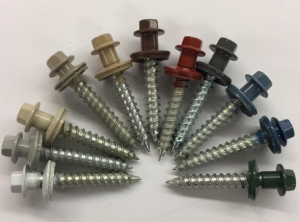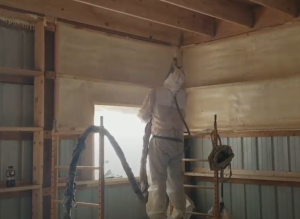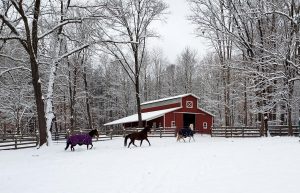Thru Screwed Steel Screws – Pull-Over and Pull-Out
Hi, my name is Mike, and I am addicted to watching engineering disaster videos.
No, there is not yet a 12 step program for this addiction.
I have learned a few things from my addiction. When it comes to construction failures, most of them come down to connections. Connections (at least when wood is involved) take fasteners – screws, bolts, nails, wooden dowels, etc.
Now if one is getting parts manufactured say in China (as an example), there is a high probability they are going to fail under load – due to manufacturing process shortcuts. Biggest shortcut (and impossible to detect by eye) is under strength material.
When it comes to post-frame construction, most buildings are clad with roll formed steel roofing and siding. It is extremely durable, very cost effective and easily installed by use of thru screws.
 At Hansen Pole Buildings, we provide only Diaphragm screws manufactured in Canada using North America components. These screws are a #12 diameter and 1-1/2 inches in length.
At Hansen Pole Buildings, we provide only Diaphragm screws manufactured in Canada using North America components. These screws are a #12 diameter and 1-1/2 inches in length.
Now why would an assembly with a thru screw structurally fail (assuming product is manufactured of proper strength steel)?
Screws could pull out of wood. This would be a problem.
Over three decades ago, at an Alumax testing facility east of Los Angeles (Perris Valley), we constructed a full scale roof to test shear strength of steel panels. Our testing resulted in some surprises. Initially we felt our weak link would be framing under roof steel. We were totally in error and surprised at our results. Our assembly was done to match industry standards and included fastening steel to roof purlins using #10 x 1” screws every nine inches. As we placed horizontal loads into this roof, before ripples even appeared in steel roofing, screws started to pull out of framing. This pull out problem was solved by using 1-1/2” long screws.
Our next problem was roof steel began to slot beneath screw grommets. Solution here was to use larger diameter screws in high stress areas (at eave and ridge) and to place screws in this area on each side of each high rib, rather than along one side only. Only after all of these screw issues were solved, were we finally able to test our steel to failure. These results showed some fairly significant values. This test’s results are published in NFBA’s Post Frame Building Design Manual https://bse.wisc.edu/bohnhoff/Publications/Copyrighted/NFBA_Design_Manual.pdf See Table 6.1 (assemblies 13 and 14).
After our test was completed, Alumax’s design engineer, Merle Townsend, designed a screw specifically to solve weaknesses demonstrated by our test. Labeled as a “diaphragm” screw (https://lelandindustries.com/productpdfs/page%2001.pdf) this 1-1/2” part features a larger diameter shank than standard screws. A side benefit of this screw is this larger diameter helps prevent screw heads from twisting off during installation.
I did some looking at what published pull out values are for those #9 x 1” industry standard screws – only value I could find was 542# and it did not specify species of wood being driven into. Our diaphragm screw has minimum pull out values of 910# (Canadian SPF) and 1060# (Douglas Fir). in some instances – nearly double industry standard!
Besides pull out, another source of structural failure is pull-over. This is where screw remains in wood and steel roofing flies away. Besides washer/grommet configuration of screw, this is also going to be a function of steel panel thickness. Graph on Leland’s website displays a 26 gauge pull-over value of roughly 500#. Converting by dividing by 26 gauge minimum thickness (0.0187) and multiplying by 29 gauge minimum thickness (0.0142) provides a pull over value of about 380#. T
herefor pull-over is going to dictate before pull-out.
(Author’s note – having searched extensively, I have yet to be able to find a published pull-over value for #9 screws.)
For steel panels, screws in field (not ends of panels) are placed every nine inches. With screws into every purlin, spaced 24 inches on center, each screw is carrying 1.5 square feet of load. Our pull-over value of 380# divided by area gives a resistance per square foot of 253#.
Highest wind load areas are at perimeters of roof (Zone 3). At 200 mph (miles per hour) and a wind exposure C (fully open to wind in one or more directions), load on components and cladding in Zone 3 is 163.65 psf (pounds per square foot), based upon mean roof height of 15 feet. Even in wind exposure D (fully exposed to winds coming over large bodies of water) and making mean roof height 20 feet, load would be 208 psf.
Hansen Pole Buildings, having now provided well in excess of 25,000,000 diaphragm screws, has yet to have had a single screw fail in pull-out or pull-over.
Yes, these screws are more expensive, however we enjoy sleeping well at night knowing our clients’ steel cladding is not going to fail due to any screw issue.








